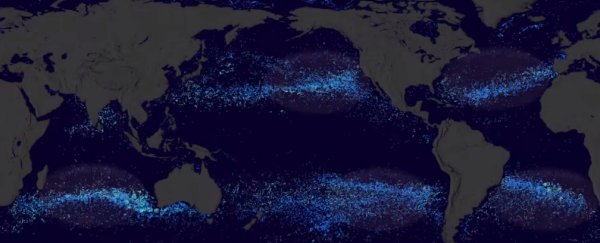
The ocean is a beautiful place, filled with all kinds of amazing creatures. But it's also home to five, ever-growing garbage patches, or gyres, and while these things are often believed to be floating islands of trash (that, according to some false estimates, are bigger than Texas), in reality, they're more like heavily concentrated soups, filled with plastic waste that's been degraded by the Sun into tiny confetti-sized pieces.
This 'microplastic' waste is literally strewn all across our ocean, from the surface to the depths below, but in five areas around the world there's way more of the waste than usual, and these are known as the Earth's 'garbage patches'.
As Carey Morishige from the National Ocean and Atmospheric Administration (NOAA)'s Marine Debris Program explains:
"While it's true that these areas have a higher concentration of plastic than other parts of the ocean, much of the debris found in these areas are small bits of plastic (microplastics) that are suspended throughout the water column. A comparison I like to use is that the debris is more like flecks of pepper floating throughout a bowl of soup, rather than a skim of fat that accumulates (or sits) on the surface."
So how exactly did they form? The team over at NASA's Scientific Visualisation Studio has collected 35 years of the NOAA data, and represented it in the handy video above, which shows how ocean currents have carried plastic waste to five specific gyres.
The research is based on hundreds of data-collecting buoys released by the NOAA over the past four decades - represented here as white dots - and it creates a pretty mesmerising but terrifying picture of just how far waste travels. It also shows why garbage naturally gravitates together and forms these large concentrations of plastic waste.
Watch the video above to find out why our ocean looks the way it does today, and make sure you sear all those white dots in your mind next time you think about littering. Seriously, it's just not worth it.
H/T: Sploid
